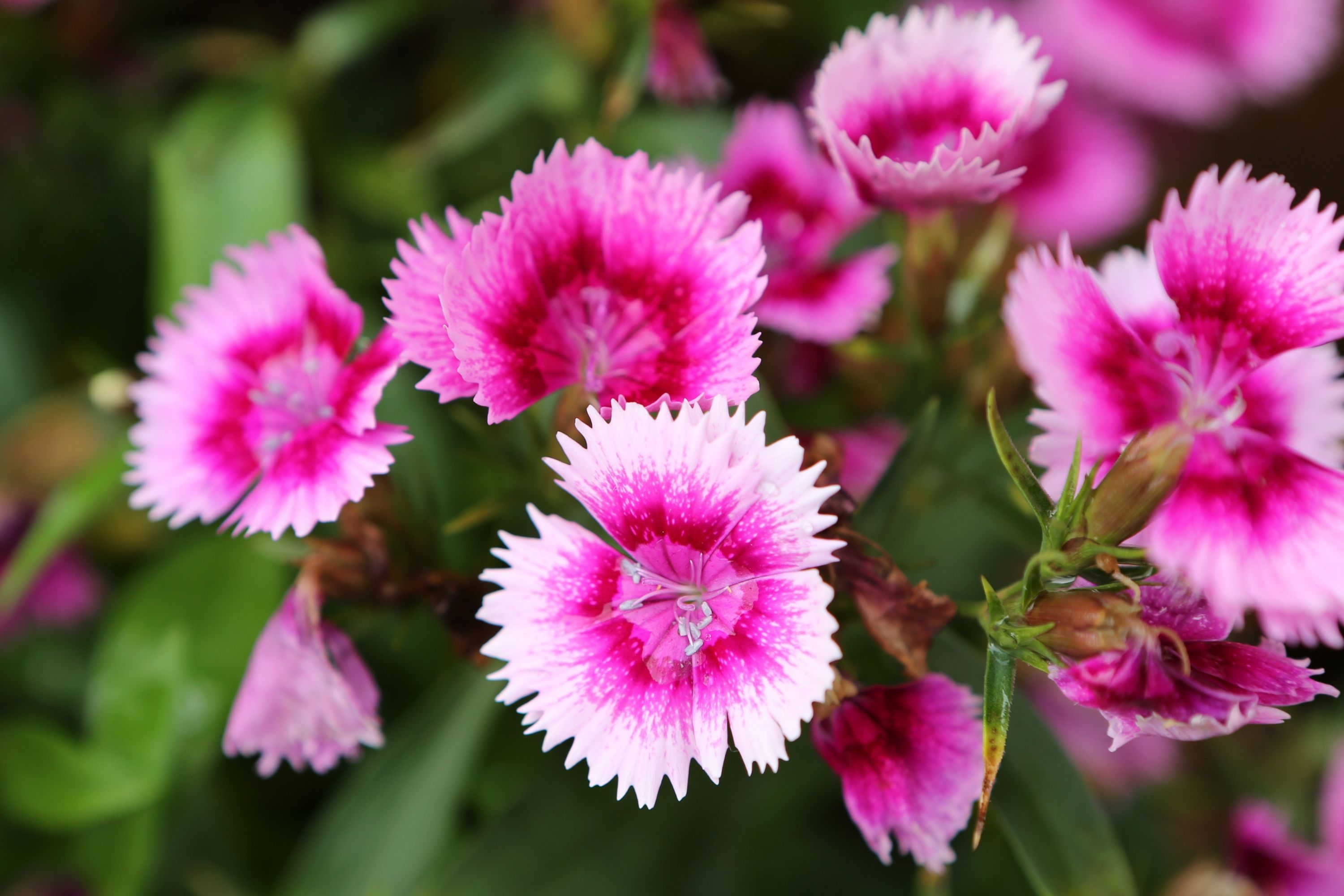Carnation
(Dianthus caryophyllus)

Description
Dianthus caryophyllus, commonly known as the carnation, is a herbaceous perennial plant that belongs to the family Caryophyllaceae. The plant is widely cultivated for its attractive flowers, which are used for decorative purposes, and also for its essential oil, which is used in perfumery and medicine. In this article, we will explore the various aspects of Dianthus caryophyllus, including its history, taxonomy, morphology, distribution, cultivation, and uses. History and Taxonomy The history of Dianthus caryophyllus can be traced back to ancient Greece, where the plant was cultivated for its fragrance and used in religious ceremonies. The name "carnation" is derived from the Latin word "carnis," which means flesh, and "ation," which means likeness. This name was given to the plant because of its flesh-colored flowers. The plant was first described by Carl Linnaeus in his book Species Plantarum in 1753. Linnaeus gave the plant the scientific name Dianthus caryophyllus, with the genus name Dianthus derived from the Greek words "dios," which means divine, and "anthos," which means flower, and the species name caryophyllus derived from the Greek words "karyon," which means nut, and "phyllon," which means leaf. Morphology Dianthus caryophyllus is a herbaceous perennial plant that can grow up to 80 centimeters in height. The plant has narrow, lance-shaped leaves that are gray-green in color and can grow up to 15 centimeters long. The flowers of the plant are produced in terminal clusters and can be single or double, with a diameter of up to 8 centimeters. The petals of the flower are fringed and are usually pink, white, red, or purple in color. The plant also produces a fragrant essential oil, which is extracted from the flowers and used in perfumery. Distribution Dianthus caryophyllus is native to the Mediterranean region, including Spain, Italy, and Greece. The plant has been widely cultivated throughout Europe and Asia for centuries and has also been introduced to other parts of the world, including North America, South America, and Australia. Cultivation Dianthus caryophyllus is a popular garden plant that is cultivated for its attractive flowers. The plant prefers well-drained soil and full sun, although it can also tolerate partial shade. The plant can be propagated by seed or by cuttings, and should be watered regularly during the growing season. The plant can also be fertilized with a balanced fertilizer once a month to promote healthy growth and flowering. Uses Dianthus caryophyllus has a variety of uses, including: Decorative purposes: The plant is widely cultivated for its attractive flowers, which are used for decorative purposes in gardens, floral arrangements, and as cut flowers. Perfumery: The essential oil of Dianthus caryophyllus is used in perfumery to add a floral, spicy, and slightly sweet fragrance to perfumes and other fragrances. Medicine: The essential oil of Dianthus caryophyllus has also been used in traditional medicine for its antiseptic, anti-inflammatory, and analgesic properties. Food: The petals of Dianthus caryophyllus can be used to add color and flavor to food, and are sometimes used to make tea. In conclusion, Dianthus caryophyllus is a versatile and attractive plant that has been cultivated for centuries for its beautiful flowers, fragrant essential oil, and medicinal properties.
Taxonomic tree:







